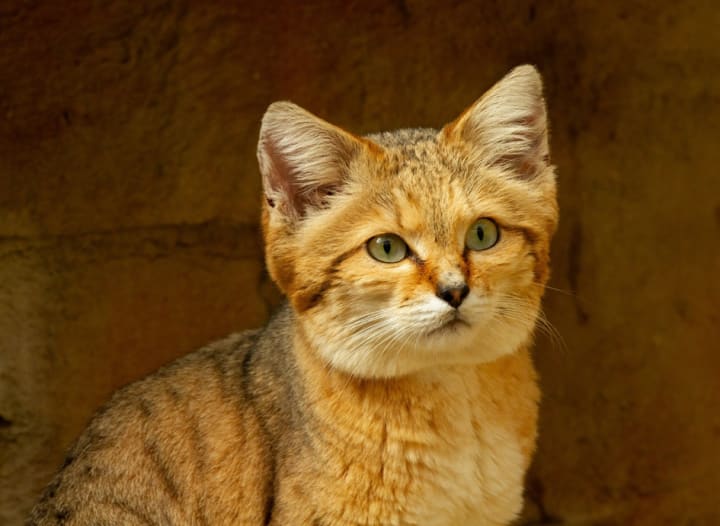10 Animals You Didn't Know Don’t Need to Drink Water
Creatures adapt ingeniously to survive

Survival, a fundamental aspect of life, relies on a few basic necessities: food, water, and shelter. These three elements form the cornerstone of life's sustenance, serving as the crucial pillars upon which existence hinges. In challenging circumstances, one might manage with only food and water, but when forced to choose between the two, water emerges as the more critical requirement. Without water, a human being can endure no more than three to four days at most, and in extreme conditions, this survival period may diminish further. However, intriguingly, certain creatures in the natural world seem to require only minuscule amounts of water for their survival, defying the traditional belief in the indispensability of water for all life forms.
1. Delving into the realm of aquatic life, we encounter an astonishing phenomenon: freshwater fish do not drink water. Despite their immersion in water, these fish abstain from ingesting it as humans and animals do. The reason behind this peculiarity lies in the salinity of their bodily fluids. The water they inhabit is substantially less salty than their internal bodily environment. If freshwater fish were to consume the water they inhabit, their kidneys would have to filter it at an incredible pace to maintain the delicate balance of salt within their bodies. Failure to do so would result in a lethal imbalance, potentially leading to their demise. Instead, these ingenious creatures utilize their gills to filter water, enabling them to absorb necessary hydration through their skin and gills via osmosis. In this manner, freshwater fish uphold the equilibrium of their internal fluids without risking harm to their health.
2. Moving to the land, we encounter mountain gorillas, massive primates weighing as much as 400 pounds. Despite their considerable bulk, these creatures possess an extraordinary ability to thrive with minimal water consumption. Their diet primarily comprises succulent plants, such as leaves, stems, roots, flowers, fruits, and insects, which provide a significant portion of their required moisture. Additionally, they acquire moisture from morning dew that accumulates on the plants they consume. Researchers have noted a recent increase in water drinking among these gorillas, which may be attributed to the impacts of climate change and heightened temperatures in their natural habitat. As temperatures rise, the risk of dehydration escalates, necessitating supplemental water sources to sustain these majestic creatures.
3. Venturing into the marine world, we find mammals, including cetaceans like whales and pinnipeds like seals, exhibiting a unique approach to water consumption. Unlike fish, these marine mammals do not rely solely on osmosis through their skin or gills. Instead, they obtain most of their water intake through their prey. By metabolizing both protein and fat from the creatures they consume, these marine mammals often find their hydration needs adequately met. In certain circumstances, they may supplement their diet with seawater if experiencing excessive moisture loss due to evaporation. Surprisingly, even the tiniest of marine creatures, such as krill, can provide sufficient water to support these large marine mammals.

4. Stepping back onto land, the adorable koalas of Australia captivate our hearts. These cuddly marsupials primarily feed on eucalyptus leaves, which, contrary to expectations, fulfil a considerable portion of their liquid requirements. Koalas are known to drink water rarely, as their specialized diet contains sufficient moisture. However, with rising temperatures in Australia due to climate change, the eucalyptus leaves may no longer provide adequate hydration, prompting these endearing creatures to seek alternative sources of water from benevolent humans.

5. Returning to aquatic life, we encounter frogs, which spend much of their lives submerged in water. Yet, frogs do not exhibit a penchant for drinking water. Instead, some frog species, such as tree frogs in Australia, utilize a fascinating phenomenon referred to as "lemonade physics." When the air temperature cools, these frogs venture outside and allow water to condense on their skin. The water droplets, akin to the beads of moisture on a glass of cold lemonade, are absorbed into their flesh, providing the necessary hydration. In addition, many frog species have specialized patches of skin on their thighs and bellies known as "drinking patches," enabling them to absorb water directly from their aquatic surroundings.

6. Transitioning to the desert, the resourceful kangaroo rats demonstrate an extraordinary ability to extract water from seemingly arid sources. Found in the Sonoran Desert, these incredible rodents have adapted to a life without any need for direct water intake. Despite their diet primarily consisting of seeds, which are not renowned for their hydrating properties, kangaroo rats' metabolism converts a mere gram of seeds into half a gram of water. Moreover, their kidneys are adept at super-processing urine, ensuring minimal liquid waste. In this way, they manage to thrive in a habitat devoid of traditional water sources.

7. In the harsh arid regions of the desert, the thorny devil stands as a testament to adaptation. This formidable-looking lizard possesses an ingenious method of obtaining water. Though it does not drink water in the conventional sense, it absorbs moisture from sand through capillaries in its skin. The microscopic grooves on the thorny devil's flesh enable it to pull water from even the slightest trace of moisture in the sand. The water is then channelled along these grooves to the lizard's mouth, allowing it to maintain its hydration in an environment where water is scarce.
8. Venturing underground, we encounter naked mole rats, peculiar creatures known for their resistance to cancer. These industrious rodents seldom require direct water intake due to their diet, which chiefly consists of plant roots and tubers. Instead of consuming the entire root, they partially eat it, ensuring the plant's survival for future consumption. By effectively managing their resources, naked mole rats successfully minimize their need for external water sources.

9. In the dry expanse of sandy deserts, we discover sand cats, small wild cats uniquely adapted to survive with minimal water intake. Though they can drink water when it is available, sand cats primarily derive moisture from their prey. Relying on rodents, birds, spiders, and insects for hydration, these adept hunters manage to thrive in the desert environment without regular access to water sources.

10. Finally, we encounter the remarkable gerenuk, slender antelopes whose name translates to "giraffe-neck." These captivating creatures have adapted to survive in areas with limited water availability. They derive much of their hydration from the plants they consume and possess nasal passages that effectively conserve moisture during exhalation. As a result, gerenuks are uniquely equipped to survive without ever having to taste water throughout their entire lives.
In conclusion, the fascinating world of animals reveals a diversity of adaptations to water scarcity. From fish and frogs to desert dwellers and marine mammals, each species has evolved ingenious strategies to survive with minimal water intake. This remarkable array of natural solutions demonstrates the extraordinary resilience and resourcefulness of life on Earth.
About the Creator
Maestro Varial
Human relations enthusiast, storyteller and blogger.






Comments
There are no comments for this story
Be the first to respond and start the conversation.